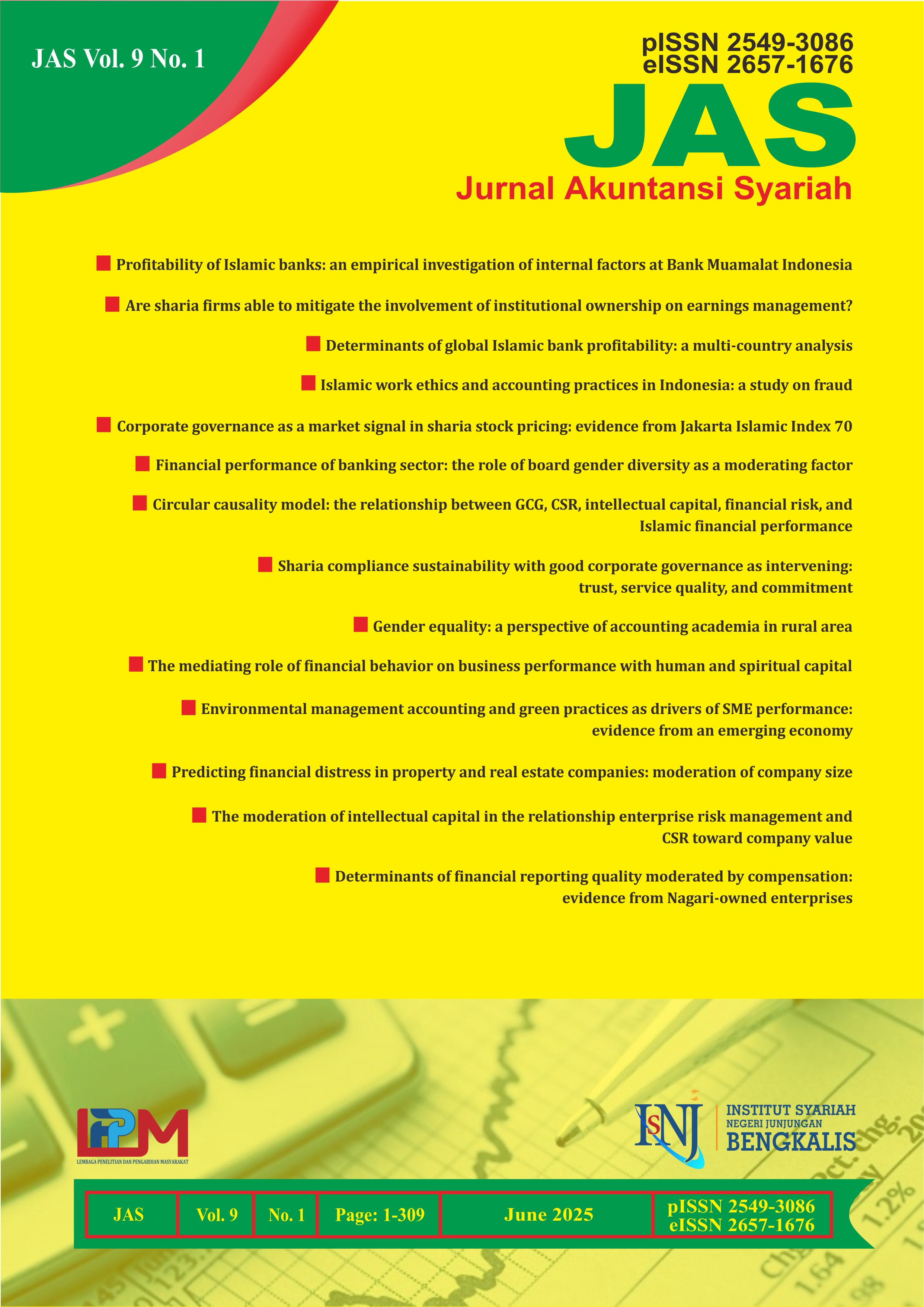Sharia compliance sustainability with good corporate governance as intervening: trust, service quality, and commitment
Abstract
Purpose – This study examines the influence of trust, service quality, and commitment on sharia compliance sustainability mediated by good corporate governance. Method – This quantitative research uses primary data in the form of questionnaires distributed to 100 respondents who are active customers at the Bank Syariah Indonesia (BSI) Bengkalis branch. The sampling technique used is random sampling. The data analysis technique used is structural equation modeling - partial least squares (SEM-PLS) through SmartPLS 3.0 software. Findings – The study's results show that commitment and good corporate governance positively affect sharia compliance sustainability, but trust and service quality do not. Trust, commitment and service quality positively affect good corporate governance. Good corporate governance can mediate the effect of trust on sharia compliance sustainability but cannot mediate the effect of commitment and service quality on sharia compliance sustainability. Implications – Theoretically, this study complements and strengthens the validity of the existing shariah enterprise theory and provides new insights into determining the creation of sharia compliance sustainability at Islamic banks. Practically, the results of this study can be used as a reference in carrying out Islamic bank operations to prioritize sharia principles and good corporate governance to achieve a wider market share.
Downloads
Copyright (c) 2025 JAS (Jurnal Akuntansi Syariah)

This work is licensed under a Creative Commons Attribution-NonCommercial-ShareAlike 4.0 International License.
 Abstract Views: 189 |
Abstract Views: 189 |  PDF Downloads: 211
PDF Downloads: 211










































